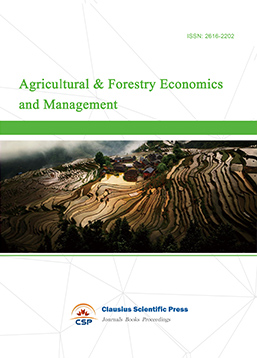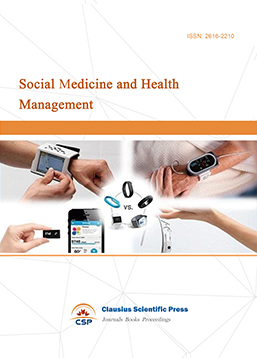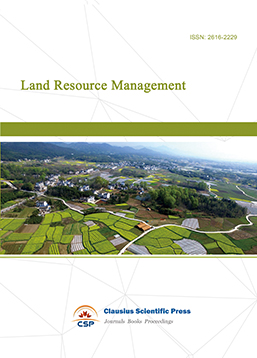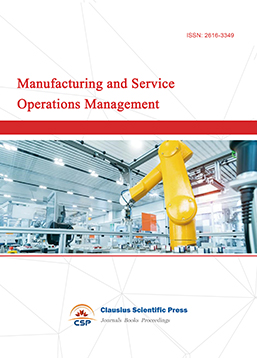Research on the Status Quo, Problems and Measures of Scientific and Technological Innovation in Shandong Section of Yellow River Basin
DOI: 10.23977/ieim.2023.060803 | Downloads: 19 | Views: 1247
Author(s)
Yuxi Wu 1, Xiaoxue Yu 1, Qingjun Lu 1
Affiliation(s)
1 Shandong University of Technology, Zibo, China
Corresponding Author
Yuxi WuABSTRACT
This study uses literature retrieval and mathematical statistics to analyze the current situation, existing problems and measures of scientific and technological innovation in Shandong Province in the Yellow River Basin. This study analyzes the current situation of scientific and technological innovation from the aspects of scientific and technological innovation investment, scientific and technological innovation output, innovation platform and innovation highland, and finds that, the development level of scientific and technological innovation in Shandong section of the Yellow River Basin increases year by year, from low level to high level, Innovation platform and innovation highland play a significant role, The level of scientific and technological innovation in Shandong province continues to improve, and the growth rate is more obvious in recent years. Based on this, this study puts forward suggestions and measures from six aspects, strengthening regional linkage, coordinating innovation resources, increasing innovation investment, coordinating capital and talents, and building innovation platform.
KEYWORDS
Shandong section of the Yellow River Basin; Investment in scientific and technological innovation; Scientific and technological innovation output; Platform for InnovationCITE THIS PAPER
Yuxi Wu, Xiaoxue Yu, Qingjun Lu, Research on the Status Quo, Problems and Measures of Scientific and Technological Innovation in Shandong Section of Yellow River Basin. Industrial Engineering and Innovation Management (2023) Vol. 6: 11-18. DOI: http://dx.doi.org/10.23977/ieim.2023.060803.
REFERENCES
[1] Xue M. Y. (2012) Spatio-temporal pattern of coupling and coordination between economic development and ecological environment in the Yellow River Basin. World Geographical Research, 31(6), 1261-1272.
[2] Jiang L., Zuo Q., & Ma J. (2021) Evaluation and prediction of the level of high-quality development, A case study of the Yellow River Basin, China. Ecological Indicators, 129, 107994.
[3] Chen Q., Lin S. & Zhang X. (2020) China's technological innovation incentive policy, Does it motivate quantity or Quality? China Industrial Economics, No. 385(04), 79-96.
[4] Guo Q. & Zheng L. (2022) Exploration of the development path of science and innovation finance —A case study of Shandong Province. Financial Development Research, No. 487(07):85-88.
[5] Qin H. & Ren B. P. (2021) Objectives and realization paths of high-quality development of urban agglomerations in the Yellow River Basin. Review of Economics and Management, 37(06):26-37.
[6] Zheng F. &Zheng C. Y. (2008) The analysis and countermeasures of R&D investment in our country. Modern Management Science, 11, 71-73.
[7] Liu J. & Xu Z. (2022) Research on the construction path of scientific and technological innovation platform from the perspective of innovation chain, A case study of Dongying City. Science and Technology Innovation and Application, 12(35), 16-18+22.
[8] Yin W. G. (2023) Experience enlightenment and future prospect of high-quality development of jointly building the Belt and Road. Journal of Xi 'an University of Finance and Economics, 03, 87-97.
[9] Chen Y, Lu J., &Zhu M. (2020). Evaluation of ecological city and analysis of obstacle factors under the background of high-quality development, Taking cities in the Yellow River Basin as examples. Ecological Indicators, 118, 106771.
[10] Xie Y. (2018). Research on spatial organization model of regional innovation system, A case study of West Hangzhou Science and Technology Innovation Corridor. Urban Development Research, 25(11), 73-78+102.
| Downloads: | 27006 |
|---|---|
| Visits: | 812595 |
Sponsors, Associates, and Links
-
Information Systems and Economics

-
Accounting, Auditing and Finance

-
Tourism Management and Technology Economy

-
Journal of Computational and Financial Econometrics

-
Financial Engineering and Risk Management

-
Accounting and Corporate Management

-
Social Security and Administration Management

-
Population, Resources & Environmental Economics

-
Statistics & Quantitative Economics

-
Agricultural & Forestry Economics and Management

-
Social Medicine and Health Management

-
Land Resource Management

-
Information, Library and Archival Science

-
Journal of Human Resource Development

-
Manufacturing and Service Operations Management

-
Operational Research and Cybernetics


 Download as PDF
Download as PDF